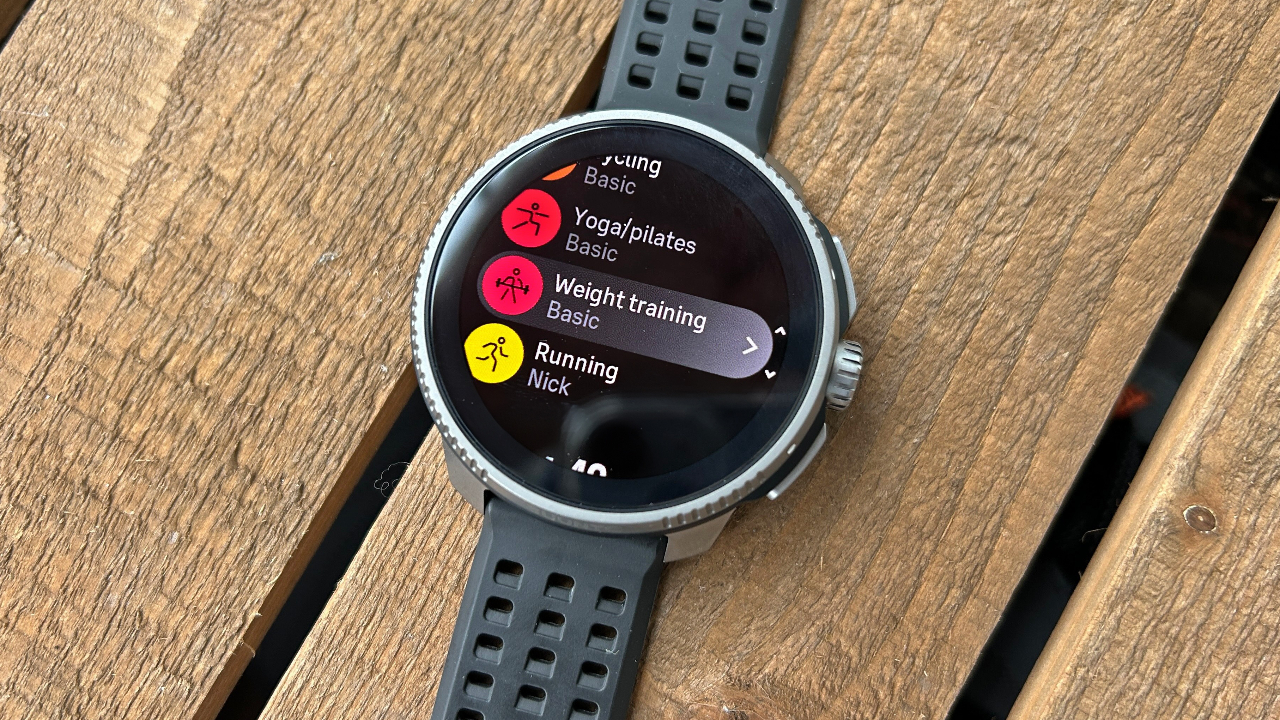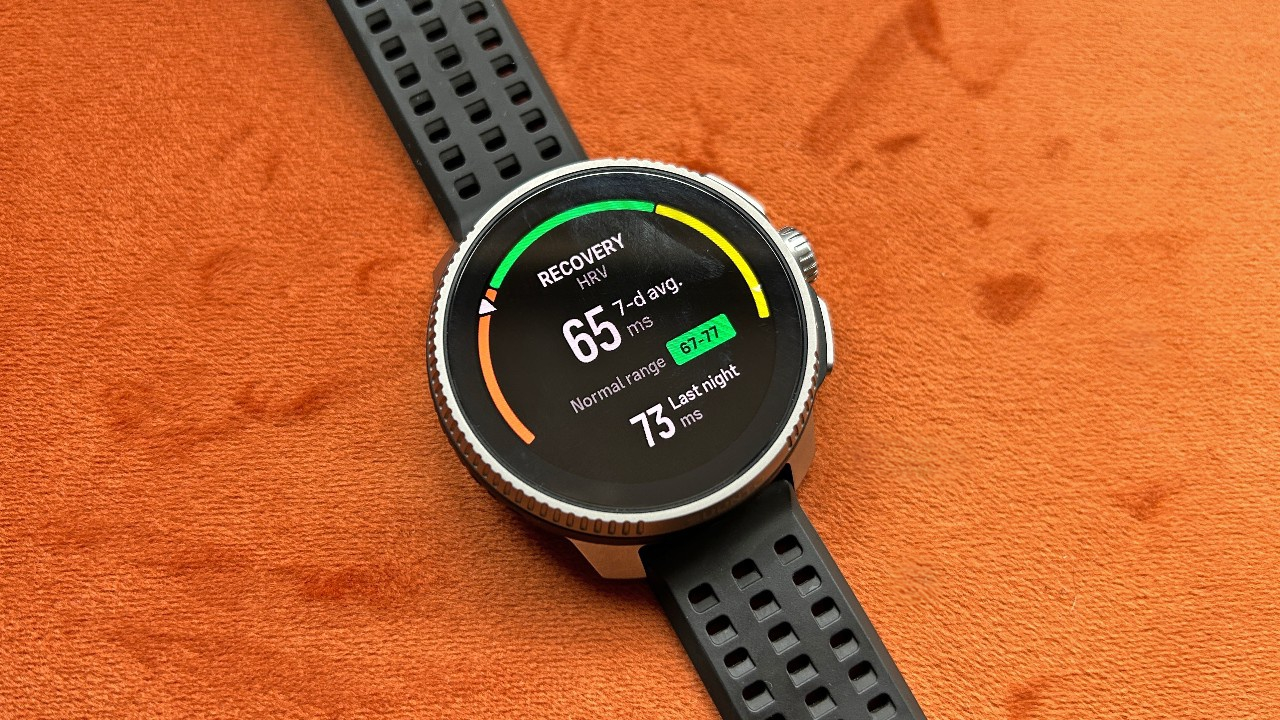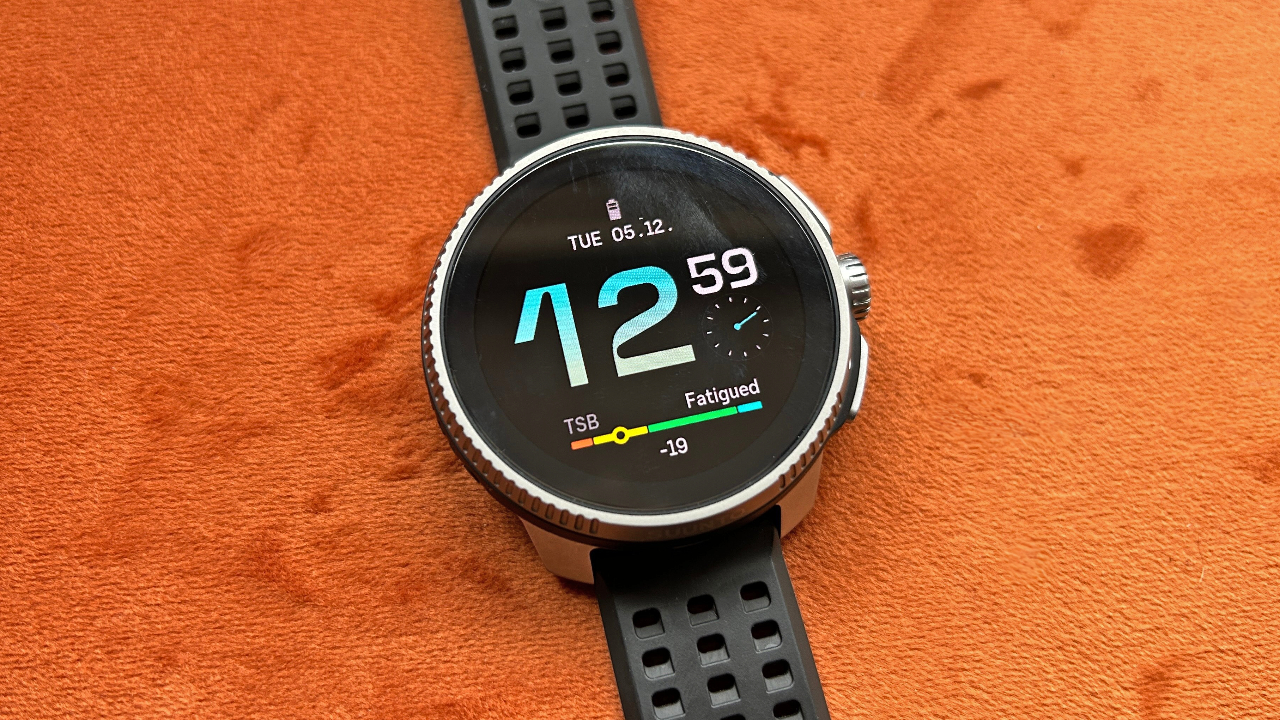
The Suunto Race is the best sports watch Suunto has made and the best alternative to Garmin at the top end of the market. It’s an excellent watch, which looks good thanks to the AMOLED display, has accurate multi-band GPS and color maps, and great battery life for an AMOLED watch.
Garmin’s best AMOLED watches like the Forerunner 965 and Epix 2 have notable advantages over the Race, but Suunto has priced the watch so it comes in cheaper than significant rivals like the Garmins and the recently-released Polar Vantage V3. It’s one of the best sports watches available, and you’ll be hard pressed to find better at its price without looking at older models.
Suunto Race: Price And Availability
The Suunto Race launched in October 2023 and in the US costs $449 for the steel model, and $549 for the titanium watch. In the UK it’s £389/£479. It’s cheaper than the Suunto Vertical (from $629/£545) despite having the same software and a brighter AMOLED display, and also costs less than its main rivals, the Polar Vantage V3 and Garmin Forerunner 965.
How I Tested This Watch

I’ve been testing the Race titanium model for a month, using it to track around 220 miles of running in that time, as well as workouts like strength and yoga sessions, along with my daily activity and sleep. During the test, I’ve also worn the Polar Vantage V3, Garmin Forerunner 965 and Garmin Epix Pro to compare the watches. I have also tested the Suunto Vertical and a range of the best sports watches from all brands.
Design And Hardware
The Race is a big watch, with a 49mm case that is 13.3mm deep. It sits well on the wrist, though, and the titanium model I tested is light at 69g (the stainless steel watch is 83g). Both models have a glass fiber reinforced plastic case and a sapphire crystal display, with the difference being the bezel and back case material.
There are two designs in the range: the all-black steel watch and the black-and-silver titanium watch, which both come with 22mm silicone straps that can be easily swapped for other designs and materials. The use of sapphire screens and a titanium bezel helps the Race stand out at its price—these durable materials usually cost a lot more, and the Race is hardier than the Forerunner 965 and Vantage V3.
The bezel has attractive detailing on the edges, though the star of the show with regards to design is the 1.43in AMOLED touchscreen display. This is bright and clear to read in all conditions, including bright sunlight, and makes using the maps on the watch easier.

You can set the screen to always-on, though all it displays in that mode is the time—in contrast with Garmin and Apple watches, where you can still see dimmed data in always-on mode. Suunto is also yet to make full use of the screen by adding in brighter, more interesting watch faces, and you can’t click through to the full widgets for things like weather by tapping on the main face, which you can do with Garmin and Polar watches.
However, my main complaint with the screen is that it lags in waking when you turn your wrist. At first, it took a second or two to wake up, which feels like an eternity compared with the speed of the Apple Watch or Garmin’s AMOLED watches. Fortunately, Suunto has improved this with a recent software update. It’s still slower than other devices to wake, but the Race is no longer annoying me on this front.
There are three buttons on the right side of the watch, with one being a digital dial. Navigating the menus is easy using either the buttons or the touchscreen, and I didn’t have significant lag when doing this throughout testing.
The Race offers multi-band GPS and tracks your blood oxygen saturation and heart rate variability overnight. It also tracks your heart rate 24/7, has an altimeter, and is waterproof to 100m. You can pair external sensors via Bluetooth, but not ANT+.
Sports Tracking And Training Analysis

The Race is a comprehensive sports tracker and offers a high level of detail when tracking running, cycling and swimming in particular. There’s nothing drastically wrong with its tracking, but there are things Suunto does that are confusing, and annoying, compared with other brands. One is that what are usually native features—like structured workouts or a hill climb screen—are treated as apps or guides with Suunto, and you can only use two apps or one guide with each workout, rather than using them all concurrently, which you can do when these are native features with Garmin or Polar.
You also can’t customize the existing sports modes on the watch, only create new ones, which means you have to add an extra running mode to see the stats you want rather than just tweaking the running mode already there. Again, this is different from every other brand.
Another frustration is that when pairing external sensors these are named by their type, so “heart rate sensor”, rather than giving the details on which sensor that is like, eg Polar H10. It can also pair only one sensor of each type. Once again, you can get by with this approach, but it makes life harder than when using a Garmin or Polar.
Suunto’s training analysis is powered by TrainingPeaks and shows your training load over the past 42 days (chronic training load or CTL) and your seven-day load (acute training load or ATL), which are based on the training stress score (TSS) of each workout you do. Your CTL is also called your Fitness in the app, while the CTL is your Fatigue, and the balance of these is called your training stress balance (TSB). You want your TSB to be productive to get fitter, or at least be maintaining fitness, as opposed to going too hard.

It’s confusing at first—unless you’ve used TrainingPeaks before—but for all the acronyms and names, it’s fairly simple and useful training analysis once you get used to it. You can see the key details of your training analysis on the watch, or get more detail and graphs in the Suunto app.
The Race also tracks heart rate variability at night, which you can use to judge the state of your body, though it doesn’t have a readiness stat like Garmin, or suggest workouts. It will estimate your VO2 max and give race predictions, which will hopefully be more accurate the longer you use the watch. Mine are still quite wrong after a month of use.
One other concern I have about the sports tracking is that the watch simply stopped tracking two workouts during the month I used it. One happened to be a 10K race, and it was incredibly annoying that the watch ended the workout unprompted at around 5.5km. This hasn’t happened in the last two weeks and I don’t think it’s a problem other reviewers have experienced, so I don’t believe it to be a widespread or long-term issue, but it is worth mentioning.
GPS And HR Accuracy
The Suunto Vertical introduced multi-band GPS to Suunto’s range, and it was an accurate watch on that front. The same is true of the Race, which has barely put a foot wrong on GPS tracking throughout the month I’ve been using it. The pace and distance have been accurate, as far as I can tell, and the GPS traces show few errors, and only mild ones at that.
I’ve compared it with the reliable Garmin Epix Pro and Forerunner 965 in that time, and the Race has matched them for accuracy, while outperforming the Polar Vantage V3. It’s up there with the best multi-band watches available. The heart rate tracking, however, has been poor. This has not just been during workouts, when I find most optical heart rate sensors can go wrong, but I’ve also noticed incorrect heart rate readings on the Race throughout the day.

During workouts I’d advise using an external heart rate sensor for more accurate data, especially if you have any interest in using the training analysis on the watch. There’s not much you can do outside workouts, but at least then the Race has not been wildly wrong, and the overnight HRV readings have been in line with the data from the Polar Vantage V3 and other watches.
Most sports watches struggle to be consistently accurate when using the optical heart rate sensors alone, but the Race is worse than others. The sensor seems more basic than the ones on Garmin and Polar watches, with fewer LEDs, which perhaps help save power but reduces accuracy.
Navigation
Your navigation journey with the Race begins with spending a long time downloading the maps you need over Wi-Fi. Adding just a couple of areas near me in England took an hour, as did adding Scotland when I went on the trip there—so make sure you do it in advance of any trips rather than relying on hotel Wi-Fi.
Once the maps are on the watch you can create routes in the Suunto app or import them from elsewhere and follow them on the watch. If you toggle on turn-by-turn directions in the app those will flash up during routes though, even if you don’t, a blue arrow on your route shows where you’re going next.
The maps are bright and clear on the AMOLED screen, and while they’re not routable maps, like on Garmin, which allow you to create routes on the fly rather than just overlaying a trail on the map, I had no problems following directions with the Race. There is an elevation screen that shows the overall profile of your route during a workout, which is useful, though not as impressive as Garmin’s ClimbPro feature, which guides you through each individual climb and descent on your route.
Activity And Sleep Tracking

The Race logs your steps and calories and also monitors your “resources”, which is essentially an estimation of your energy levels based on sleep and activity. The fitness tracking is a minor feature on the watch relative to sports, but the data is there if you want it. There is more to the sleep tracking, which monitors your sleep stages as well as blood oxygen and heart rate variability overnight. It shows a seven-day rolling average plotted against your personal baseline, which takes 14 nights to establish, to monitor your recovery. This picked up periods where I was less recovered very well.
The Race is the first Suunto to track HRV and it does it well. It was accurate during my testing and shows information that can help guide your training in estimating your recovery status. The sleep tracking also seems accurate in gauging when I was awake and when I wasn’t, though it misses periods of time awake in the night on occasion (which may not be a problem if you don’t have a young child).
Smart Features
Despite the AMOLED display, the Suunto is not a smartwatch, and lags behind what you get from Garmin, in that it doesn’t store music or offer NFC payments. It does show notifications, and has music controls and a weather forecast, and you can use the latter during workouts, which is useful to have on long and adventurous activities.
A few small things could be improved to make the Race feel “smarter”, even if adding music and NFC payments is unlikely. For one, it’s great to be able to tap data on the watch face to then see full widgets, which you can do with Polar and Garmin devices. More watch face customisation would be a strong addition to make better use of the AMOLED display.
Battery Life
The Race offers outstanding battery life for an AMOLED watch. Suunto lists it as offering up to 12 days of use with 24/7 tracking enabled, which drops to seven days with the always-on screen. You get 40 hours of GPS tracking in the most accurate mode using multi-band GPS, which is extraordinary—even the larger Garmin Epix Pro 51mm only lasts 30 hours in multi-band mode.
During my testing, the Race lasted seven days on a charge with the screen set to always-on, running almost every day and with notifications coming in. That’s around the same as the Garmin Forerunner 965 and slightly less than the Epix Pro 51mm, though the Race will last longer than both of those when tracking an individual activity and will suit people tackling multi-day events well. It also easily outperforms the Polar Vantage V3 on battery life.
Is The Suunto Race Worth It?

The Suunto Race is outstanding value for the materials used and the quality of the sports tracking, as long as you’re happy to link to an external heart rate sensor. It doesn’t match the breadth and depth of the features you get on top Garmins, but comes in cheaper and the build quality matches up to sapphire models of the Epix and Fenix range.
You could pay more to get the Forerunner 965, which I think is a better watch with extra smart features, a slightly sleeker design and more impressive navigation tools and training analysis. But the Race has a more durable design and matches the Garmin on the most important sports tracking features.
The most significant competition to the watch could be older Garmin watches in sales, especially the Garmin Epix 2, which dropped as low as $449.99 in the recent Garmin Black Friday sales. Garmin still has the edge on many fronts, so at the same price I’d get one of its top AMOLED watches with maps, but on MSRP there’s no doubt the Race is worth considering, and it bodes well for Suunto’s future that it has produced such a great watch at this price.







